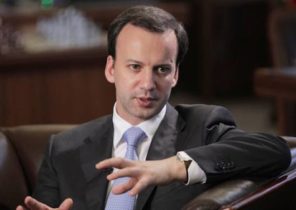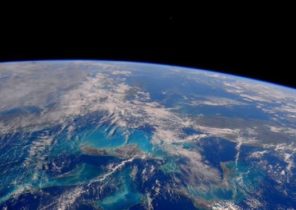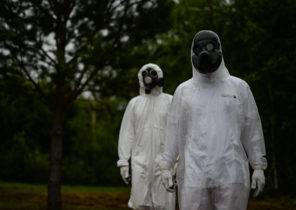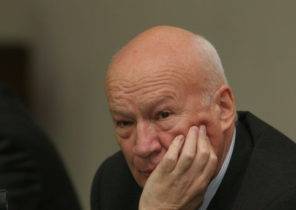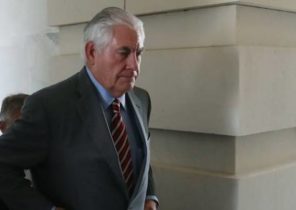
The US needs to quickly make the first political decision on the Middle East and especially in Syria. The administration’s actions trump it is difficult to predict, but there are many signs that the President implements his plans about a new zone of security and cooperation with Russia, says former Swedish Ambassador to Ankara Michael Sahlin (Sahlin Michael).
After a chaotic start and a powerful President Trump and it is not until the end equipped with the security team time to address the issue of the new policy in the middle East, which somewhat absently said during the election campaign. Most likely, in the last days of her there was a conversation in connection with the decision of the immigration in the United States. You need to hurry up with specific solutions, the Trump time to undertake the task, “the urgency of which is matched only by its complexity” (to quote the statement of the former Deputy Minister of foreign Affairs Anthony Blinken (Blinken Anthony) on January 31 in new York).
In Syria and the middle East much has happened since leaving the Obama administration passed the baton to the incredible trio Russia — Turkey — Iran. Aleppo fell, and was followed by a change of roles in the theater of hostilities. So now it’s time for Trump and the company make the decision on how exactly the US will be (if at all) attempt to re-seize the initiative and leadership in conditions when plans for regime change receded into the background.
In his article Antony Blinken maintained that the administration of the trump, despite the difficulties with Turkey should continue the policy of his predecessors and to bet on the Kurds as the main tool in the further attack on the main city ISIS (a terrorist organization banned in Russia — approx. TRANS.), Rakka.
From Washington in recent days, there are signs that this decision — continue to rely on the Kurdish people’s protection Units as allies and support U.S. ground forces in practice already accepted. But it will immediately affect the already tense relations with allied Turkey, which previously threatened to close the US base in Incirlik, where focus aviapoisk coalition leading the fight against ISIS in Syria and Iraq.
So at the moment the administration of the trump in its policy is forced to “choose” between NATO ally Turkey and those of the Kurdish groups in Northern Syria, which organizationally and ideologically akin to the resistance movement PKK in Turkey. No better than Obama for many years prior to this, Trump will be in all of these mazes to find a path between Turkish and Kurdish interests, as he hadn’t focused on the fact that the fight against ISIS in the current situation should be a top priority.
Despite the ongoing uncertainty, the fact that trump focuses on the fight against jihadism and ISIS, and makes it still more strongly and more actively than its predecessor, careful analysts noted long ago.
But now troubled world is interested in, what really has in mind trump, when after joining the government continues to say that he “definitely will create a” protective(s) area(s) in Syria and possibly in Iraq. That’s where the urgency of the task is not inferior to its complexity, since, as Russia began to play the role of the military and political dominance of Turkey radically changed the policy. The meeting in Astana was supported by the truce, although very fragile, and there have been many other changes since, as the US last time I sat in the driver’s seat or at least close.
The issue of creating a partial guard zone, one or more, and inevitably related no-fly zone is not the first year is on the military agenda and, in particular, is advancing Turkey. The problem was, and remains, that the arguments in favor of this decision was equally shaky, in a significant underestimation of related practical military difficulties.
The idea of the necessity of security zones, primarily based on the need to give protection to all civilian victims of war, faced with military and strategic understanding of how much is required purely military resources to truly protect this area — as demonstrated by the bitter experience gained during the war in Bosnia. In addition, the Obama administration did not want to deal with the risk of entry into a direct war with the Assad regime or even (after the intervention) with Russia if such zone is in itself desirable from a humanitarian point of view, would be maintained against the will of Damascus, and Moscow (and Tehran).
In other words, the question is how the team trump the current situation is itself the realization of this idea. The talks apparently were conducted with many interested countries, such as Saudi Arabia (prospective sponsor) and Russia, and these parties reportedly had received a cautiously positive response, but with reservations. In the case of Russia was followed by a polite offer to first obtain from the Damascus agreement on measures for the creation of a security zone.
As the Turks and the Iranians with their specific and opposing geopolitical interests will be able to conduct diplomatic Affairs on the issue of security zones, remains unclear. Obviously, and it remains unclear in what proportion are these still very weak plans of trump about security zones and three-way truce, and the ongoing Geneva talks on finding a political solution.
Regardless of the uncertainty, which continues to be an integral property of all potential strategies of trump, it can be stated that, on the one hand, hard course for victory over ISIS suggests that military and political point of view it is necessary to hurry with the adoption of a decision. On the other hand, this solution is in practice forced to do so several important and difficult choices: between Ankara and Kurdish forces, between Ankara and Damascus between Moscow, Tehran and Saudi Arabia and so on.
Impossible to please everyone, especially if you because of America first decided to promote the idea of creating protective zones. Because here, even if we forget all other things, there is a very delicate question about where in Syria the zone(s) need(s) to be.
Based on the previous trump, one can presume to guess how it may appear possible to compromise vague enough to seem attractive or at least tolerable to the stakeholders. In this case we are talking about a Russian-American compromise.
The safety zone will be located in the area to the North of the country, where Turkey is already a de facto staged something of a free zone and from ISIS, and Kurdish militias. Turks will leave, when you get a promise of protection, including awesomite, which will carry Russian-American combined forces and perhaps someone else.
The Turks will get their area, if you promise to allow Kurdish troops (with the support of the U.S.-Russian troops) to play a major role in the liberation of Raqqa. For the Kurds on the one hand, will mean continued support of Americans, on the other hand, the need in the future to abandon plans for the return of the Kurdish cantons in Northern Syria. The Russians and the Iranians agree to it, including, realizing that without the Turks and Americans real peace in Syria will never achieve.
If it works, ask someone skeptical. Maybe, but a lot more needs to be done. We are only talking about the first step of the trump.

